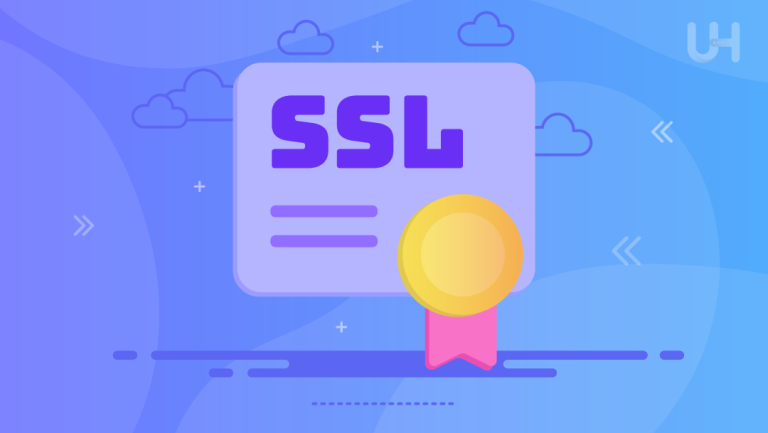The eCommerce industry is experiencing continuous growth; however, it still faces a significant challenge: the high eCommerce cart abandonment rate during the online shopping process. Research indicates that approximately 70% of shopping carts are left unpurchased before customers complete their transactions.
In this article, we will delve into effective strategies for recovering abandoned carts, providing businesses with insights to reclaim lost sales and enhance their overall eCommerce cart recovery rates.
What is eCommerce Cart Abandonment?
eCommerce cart abandonment occurs when a potential customer begins the checkout process for an online order but fails to complete the purchase. Any item that enters the shopping cart but is not finalized in the transaction is considered “abandoned” by the shopper. Retailers pay close attention to cart abandonment as it is a significant aspect of the online shopping experience.
The eCommerce cart abandonment rate is calculated by dividing the total number of completed transactions by the total number of initiated transactions. This rate indicates the percentage of users who show purchase intent by adding an item to their cart but do not complete the purchase.
Tracking the eCommerce cart abandonment rate is crucial for eCommerce platforms because a high rate may suggest a poor user experience or issues in the sales funnel. Reducing cart abandonment directly leads to increased sales and revenue, making the optimization of the checkout process a primary focus for many online retailers.
How to Reduce eCommerce Cart Abandonment
Cart abandonment has many potential causes, making it a complex issue to address. The first step in tackling this problem is developing hypotheses about why visitors leave their carts. This can be achieved by analyzing analytics data to identify drop-off points, conducting user research and surveys, or comparing your checkout process to competing websites.
Once you have generated a hypothesis, you can test various solutions on your site through A/B testing to determine whether a proposed solution will help reduce the eCommerce cart abandonment rate.
Optimize Your Checkout Process
A lengthy and complicated checkout process is almost always certain to give rise to a high occurrence of cart abandonment or lost sales. To improve your checkout experience, take a simplification approach to the number of steps to make a purchase. Consider breaking it down into clear, easy-to-handle stages, removing any actions that aren’t necessary.
Another important step is to cut down the number of form fields: only ask for information that will be used to process and complete the order. This may include reducing or eliminating required fields for secondary addresses or phone numbers. This can frustrate customers. Providing a guest checkout option will greatly improve usability. Most customers do not want to include the extra steps of creating an account for purchasing. Allowing them to checkout as guests enables quicker and easier transactions.
Lastly, ensure the checkout page is mobile-friendly, as a huge number of users shop through smartphones. By focusing on these areas, you can create a more user-friendly checkout process that encourages conversions and reduces cart abandonment rates.
Be Transparent About Costs
Unexpected shipping fees and additional costs can significantly frustrate customers and impact their purchasing decisions. To enhance customer satisfaction and transparency, price optimization is crucial to display all charges clearly and upfront during the checkout process. This includes not only the base price of the items but also any taxes, handling fees, and shipping costs. By ensuring that customers are fully informed of the total cost before they finalize their purchase, you can help build trust and minimize cart abandonment.
Additionally, consider the possibility of offering free shipping to improve the overall shopping experience. Free shipping can be a compelling incentive that encourages customers to complete their transactions and nurtures leads to increased order sizes. If offering free shipping isn’t feasible for every order, you might explore options such as a minimum purchase threshold for free shipping or occasional promotions to create excitement and drive sales.
Offer Multiple Payment Options
To effectively meet a wide range of customer preferences, it’s essential to implement multiple payment gateways. This includes accepting traditional credit and debit cards for those who prefer conventional methods of payment. Additionally, integrating popular digital wallets can appeal to tech-savvy consumers who enjoy the convenience of mobile transactions. Offering installment payment options can further enhance accessibility, allowing customers to spread the cost of their purchases over time, which can be particularly attractive for higher-priced items. By incorporating this variety of payment solutions, businesses can create a more inclusive shopping experience that caters to their diverse clientele’s unique financial needs and preferences.
Implement Exit-Intent Popups
Implementing strategically designed exit-intent popups can be a valuable tactic for capturing customer interest just as they are about to leave the checkout page. These pop-ups can showcase enticing last-minute offers or exclusive discounts tailored to the specific products the user is considering. By analyzing user behavior and recognizing when a visitor is likely to abandon their cart, you can trigger these popups to appear, prompting users to reconsider their decision. This not only increases the chance of completing a sale but also enhances the overall shopping experience by providing an extra incentive that may ultimately encourage the user to proceed with their purchase.
Enable Cart Recovery Emails

Automated cart recovery emails have proven to be a powerful tool for re-engaging customers who have left items in their shopping carts without completing the purchase. These emails should include a clear reminder of the specific items the customer abandoned, ideally with images and descriptions to spark their interest. Additionally, offering an incentive, such as a limited-time discount or free shipping, can significantly increase the likelihood of conversion. Highlighting the urgency of the offer can further motivate customers to return to their carts and finalize their purchases. By combining personalized reminders with enticing incentives, businesses can effectively boost their sales and enhance customer satisfaction.
Provide Live Chat Support
Providing real-time support during checkout is crucial for addressing customer concerns and inquiries as they arise. This immediate assistance can help clarify any uncertainties related to payment methods, shipping options, or product details, effectively reducing anxiety for the shopper. By proactively engaging with customers through chat support or interactive help features, businesses can significantly enhance the shopping experience, ultimately minimizing the likelihood of cart abandonment. When customers feel supported and confident while finalizing their purchases, they are more likely to complete the transaction, leading to higher conversion rates and increased customer satisfaction.
Reduce Your Cart Abandonment With Reliable Hosting!
Enhance your eCommerce performance with UltaHost’s eCommerce Hosting solutions. Our platform is specifically designed to manage traffic spikes effectively, ensuring a smooth and uninterrupted shopping experience for your customers.
Optimize for Mobile Users
Many eCommerce shoppers now prefer using mobile devices for their online shopping. Given this trend, optimizing your checkout process for mobile users is crucial. This means creating a seamless and user-friendly experience that allows customers to navigate their purchases easily, view product details, and complete transactions without hiccups. Focus on minimizing the number of steps in the checkout process, ensuring that buttons and links are easily clickable and that forms are simple to fill out on smaller screens. By prioritizing a mobile-friendly checkout experience, you can increase customer satisfaction and conversion rates.
Build Trust with Security Badges
Showcase your SSL certificates, trust badges, and various other security assurances prominently on your website. These elements play a crucial role in instilling confidence and building trust with your customers. By visibly displaying your SSL certificate, you reassure visitors that their data is being transmitted securely. Additionally, including renowned trust badges from reputable organizations can further validate your commitment to security and reliability. This transparency helps enhance your brand’s credibility and encourages customers to engage more freely with your services, knowing that their personal information is protected.
Provide Real-Time Customer Support
Shopping cart abandonment is a common issue faced by e-commerce businesses, often stemming from customers having unanswered questions during their shopping experience. To address this challenge effectively, providing real-time support is crucial. Implementing live chat or chatbot functionalities allows you to engage with customers immediately, addressing their concerns and guiding them through the purchasing process. This instant assistance can significantly enhance the shopping experience, increasing the likelihood that customers will complete their purchases.
Furthermore, to maximize the efficiency of these real-time support features without sacrificing your website’s performance, consider upgrading to a Fast VPS Hosting plan. This type of hosting provides dedicated resources. It also improves speed, ensuring your site runs smoothly even during peak traffic times. Investing in quality hosting creates a seamless user experience. This leads to customer satisfaction and reduced cart abandonment rates.
Streamline Site Speed
Slow-loading websites can significantly contribute to user abandonment, particularly during checkout. Understanding that every second of lag can impact customer retention is essential. To enhance website performance, consider optimizing images, implementing caching strategies, and investing in high-performance hosting solutions. For optimal speed and reliability, the NVMe VPS Hosting plan is a valuable option to explore.
Conclusion
Reducing your eCommerce shopping cart abandonment ratio requires strategic planning and the right toolset. Whether checkout optimization or re-targeting ads, every move you make will help strengthen your sales conversion rate. One can ensure a seamless shopping experience that keeps customers engaged throughout their buying journey by using the right strategies, such as streamlining the checkout process, displaying multiple payment options, and providing clear shipping information. Remember that success is all about constant testing to adapt to the right solution. By applying these tips, you will be on your way to boosting conversions and maximizing revenue.
UltaHost’s High RAM VPS Hosting ensures unmatched speed, stability, and reliability for seamless performance and handling of high-traffic eCommerce stores. Optimize your online store’s performance and reduce cart abandonment rates with a powerful hosting solution tailored for demanding workloads.
FAQ
What is an eCommerce cart abandonment rate?
The ecommerce cart abandonment rate measures the percentage of customers who add items to their cart. These customers then leave without completing the purchase.
How do you calculate the cart abandonment rate?
To calculate the cart abandonment rate, subtract the number of completed purchases from the total carts created, divide by the total carts, and multiply by 100.
What are some common reasons for cart abandonment?
Common reasons include unexpected costs, lengthy checkout processes, lack of trust, and limited payment options.
How does mobile optimization reduce cart abandonment?
A mobile-optimized site ensures a seamless shopping experience across devices, encouraging customers to complete their purchase.
What role does hosting play in preventing cart abandonment?
Reliable hosting, like eCommerce Hosting, ensures fast loading times and secure transactions, reducing the likelihood of abandonment.
What are abandoned cart strategies?
These include retargeting campaigns, email follow-ups, offering incentives, and simplifying the checkout process.
How can I use popups effectively to reduce cart abandonment?
Use exit-intent popups to offer discounts or highlight limited-time offers just as customers are about to leave.












